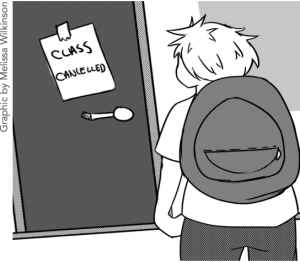How the faulty communication system is affecting STLCC students
By: Tania Robins
Staff Writer
As a student at STLCC I have encountered many issues with communication through technology. For example, in 2016 I had a class that was canceled for three days. The professor was ill and reached out to the class through email.
Unfortunately the message was delayed enough so that no one in class received it until it was too late. When I arrived at class and saw the cancellation notice posted on the door, I was frustrated at the time I wasted getting to campus only to leave immediately.
Another example is syllabus changes. Sometimes professors don’t post changes through email or blackboard. At times they are just announced at the beginning or end of class. Students who leave early or don’t attend class that day end up oblivious to the changes.
Another example is the school’s text alert system. In May I received six confusing and alarming text messages. The first message, received at 11:14 a.m., read, “DISREGARD LAST ARMED INTRUDER MESSAGE”. Then at 11:45 a.m. I received two more messages reading, “aware of your surroundings, secure yourself behind locked doors, turn”, “emergency notification: armed intruder [location here] there has…”. Three more alerts arrived at 12:47 p.m. reading, “been a report of an armed intruder at STLCC [location here]. Be…”, “off lights, stay out of sight and silence your phone. Standby for…”and finally “additional messages regarding this incident.”
There was not a follow up message indicating that the school was safe and secure again. There wasn’t any information about which campus had the armed intruder. There was a huge gap in time between the six text messages and they were all unclear. It made me think about how effective our school’s alert systems are.
Another frustrating issue is giving students little to no notice that a class they have registered and paid for is canceled and no longer available. I was notified September 8 that a class I signed up for was not happening due to low enrollment. I was left scrambling last minute to find a class that was available. Late start classes began the next week on the 11th which gave me barely 48 hours to research my options for a replacement.
Before sending out emergency alerts, the school should make sure it’s organized and sending a clear message.
Send out follow up text alerts, tweets and emails so the students and faculty know if the situation has been resolved. Professors, post to blackboard or email any changes to the syllabus for assignments, projects or tests. The school should consider informing students about class changes or cancellations as early as possible to allow students time to figure out what other class they could take.
Communication is critical for the school, faculty, staff and students so information isn’t delayed or passed over altogether. Small changes like these could improve communication for everyone.










